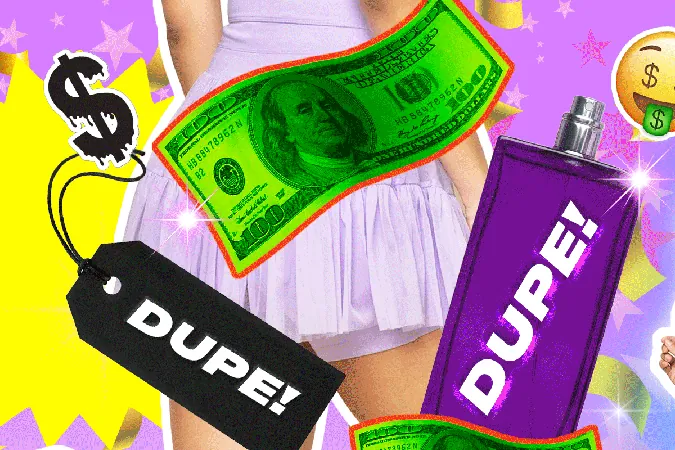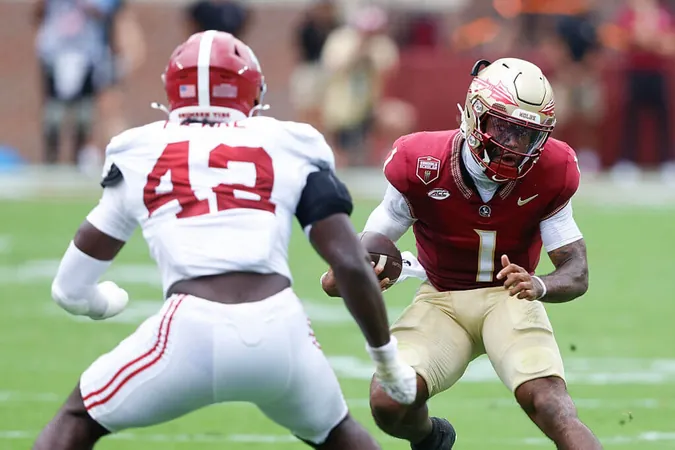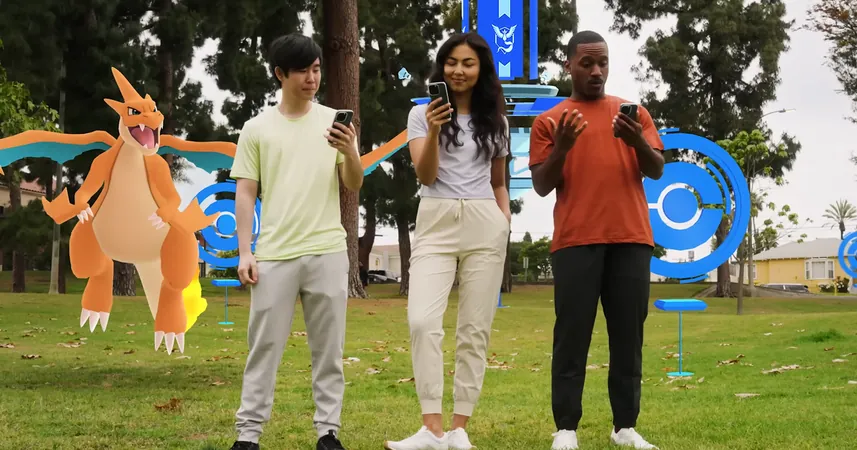
How Dupes Are Transforming the Online Shopping Game
2025-07-22
Author: Wei
It all started with a simple video clip. Cassey Ho, the creative mastermind behind the athleisure brand Popflex, was having her roots dyed when messages began flooding in about Taylor Swift flaunting her design: the Pirouette Skort. This tutu-style wonder, equipped with built-in shorts, was about to change Ho's life forever.
"I was just numb. I couldn’t scream or speak; I was dead," Ho recalls about that monumental moment. Despite being on screen for just a blink, the skort was snatched up by eager consumers, selling out within an hour. Preorders surged past 10,000 the following week, with over 50,000 units sold to date. But fame invited imitation.
The Rise of the Dupes
Almost overnight, countless look-alikes of the Pirouette Skort appeared online. The sudden influx of clones—from Amazon to TikTok Shop—has left Ho feeling powerless. These dupes are often sold at a fraction of the original price and shamefully leverage Popflex’s copyrighted images, sometimes altering them slightly just to fit their listings.
A Sea of Imitations
In May 2025 alone, Popflex registered 461 patent infringements surrounding the skort, but that's merely scratching the surface of thousands more spotted through reverse image searches. "I don't have the time or resources to go after every infringer," Ho expresses her frustration.
The duplication trend isn’t new; history shows that copycats have existed for centuries. Today, the internet amplifies this phenomenon, offering dupes of everything—fashion items, tech gadgets, and home goods. The speed and ease of creating and selling knockoffs surpass anything seen before; what once thrived in back alleys now thrives in the digital realm.
The Dupe Industrial Complex
While dupes have always lurked in the background, the social media age has given birth to an entire subculture focused on scoring cheaper, look-alike versions of the products we crave. Brands like Trader Joe’s expend minimal effort to release nearly identical cosmetics, packaging, and formulas, all designed to catch the eye of savvy shoppers.
For many, hunting for dupes becomes an act of empowerment, a way to prove that the original producer is overcharging. If a dupe is cheaper, the narrative goes, the original must be exploiting consumers.
Legal Gray Areas and Consumer Behavior
Social media platforms grapple with the realities of dupes by posting warnings against counterfeit goods, yet they often allow look-alikes to thrive. The legal distinction between dupes and counterfeits is foggy, making enforcement a confusing uphill battle.
Experts point out that marketing terms like "alternative" don't evoke the same excitement as "dupe." Buyers often seek a sense of secret knowledge and satisfaction from finding a cheaper equivalent.
A Changing Market
The fashion industry has a long history of producing similar items. Japan’s post-WWII culture, for instance, saw craftsmen meticulously recreate American garments. Now, dupe culture permeates nearly every market. Even major retailers adopt the term "dupe" as a promotional tactic, paralleling social media's grassroots movement.
However, discussing the ethics of dupes often leads to polarized opinions. Is it okay to buy a cheaper version of a designer piece? The debate hinges on accessibility versus originality and the value of creative expression.
A Designer’s Dilemma
Ho has attempted to protect her work through design patents, which can take considerable time and resources to secure. For instance, she spent over a year and thousands of dollars obtaining a patent for the Pirouette Skort. Despite this effort, fast-fashion brands release replicas almost instantaneously, making it challenging for designers to protect their creations.
The struggle is often a losing battle; listings for dupes are frequently removed, but new ones pop up in their place. Even Ho's own promotional materials have been co-opted and manipulated in unethical ways.
Social Media as a Tool for Advocacy
To combat this, Ho utilizes social media effectively. In one viral TikTok, she called out a major retailer for selling a copy of her design. Her advocacy incited public backlash, resulting in quick action against the counterfeit product.
The landscape of online shopping continues to evolve, where the line between original designs and their copies is increasingly blurred. For designers like Ho, it’s about adapting and fighting back in a market reeled by immediacy.
The Dupe Culture’s Wider Impacts
Recent viral trends, like the “Wirkin” from Walmart—an affordable look-alike of the prestigious Hermès Birkin—demonstrate just how deeply rooted this phenomenon is in modern consumer culture. Some view such products as a triumph for democratizing luxury, while others argue they dilute brand craftsmanship.
Ultimately, the narrative around dupes is complex. It raises questions about value, creativity, and what it means to consume in an age where everything can be replicated. As shoppers become more discerning, the cycle of imitation may evolve, but it’s unlikely to disappear anytime soon.





 Brasil (PT)
Brasil (PT)
 Canada (EN)
Canada (EN)
 Chile (ES)
Chile (ES)
 Česko (CS)
Česko (CS)
 대한민국 (KO)
대한민국 (KO)
 España (ES)
España (ES)
 France (FR)
France (FR)
 Hong Kong (EN)
Hong Kong (EN)
 Italia (IT)
Italia (IT)
 日本 (JA)
日本 (JA)
 Magyarország (HU)
Magyarország (HU)
 Norge (NO)
Norge (NO)
 Polska (PL)
Polska (PL)
 Schweiz (DE)
Schweiz (DE)
 Singapore (EN)
Singapore (EN)
 Sverige (SV)
Sverige (SV)
 Suomi (FI)
Suomi (FI)
 Türkiye (TR)
Türkiye (TR)
 الإمارات العربية المتحدة (AR)
الإمارات العربية المتحدة (AR)